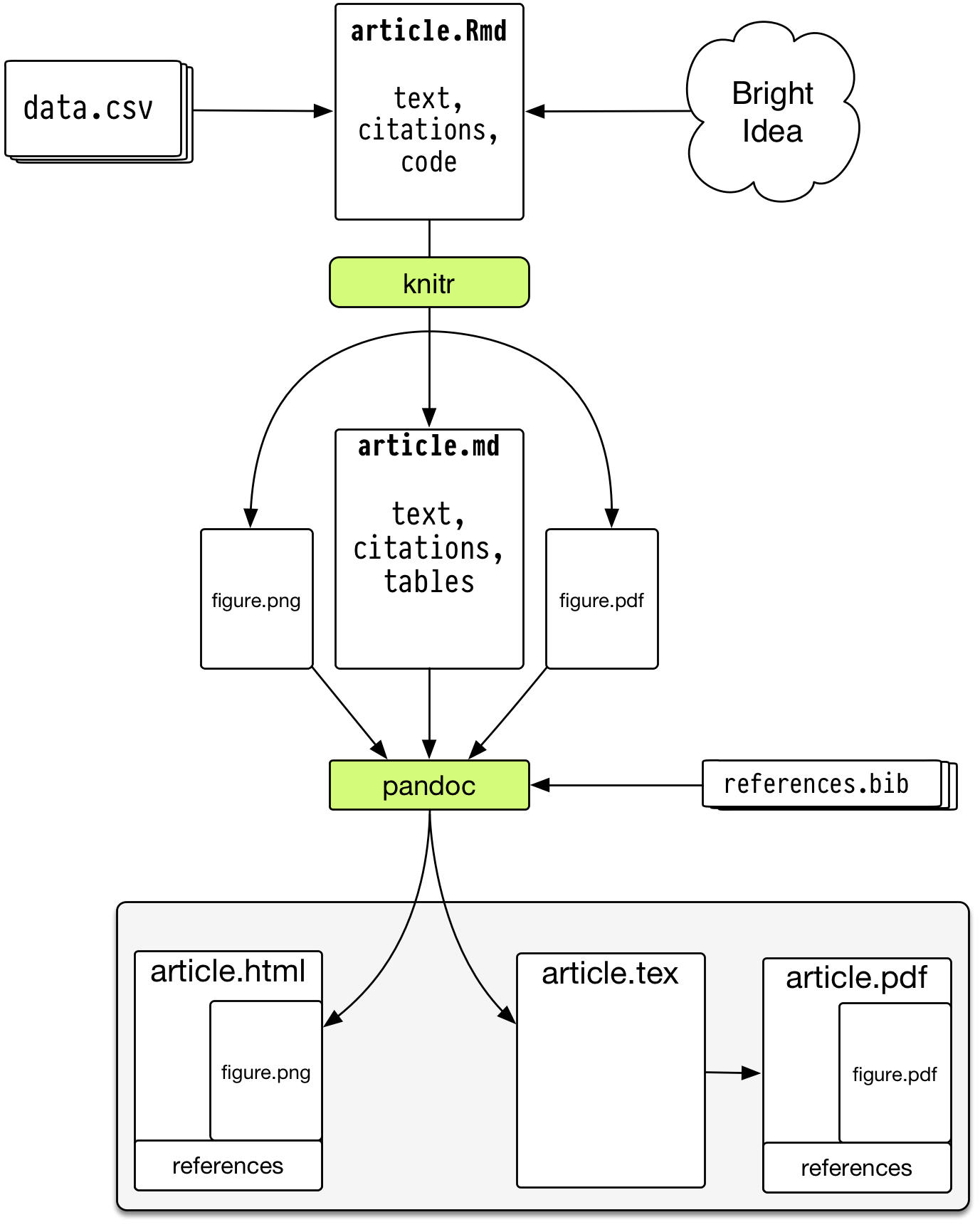@iamciera Nice start on the workflows!
Couple of thoughts on workflows:
- Not sure if there is a standard format, but it might be nice to have markup/language (i.e. .md, .tex, etc.) formatted differently that tools (knitr, pandoc ...). Perhaps the rounded rectangles you currently have for the language and ovals for tools. Along that same line of thinking, I would separate knitr Something like:

- Do we want to include other output formats from pandoc, such as .docx, .tex, etc.?
- As an alternative to illustrator, I have used Inkscape. Not sure what your concerns were about long term, but it is free!


It would be nice to have the workflows easily generated so in the future people can add their own, ideally with all of them matching in format and color coding. I can generate them fast in Illustrator, but this would not help long term.
Another will be collecting the workflows.